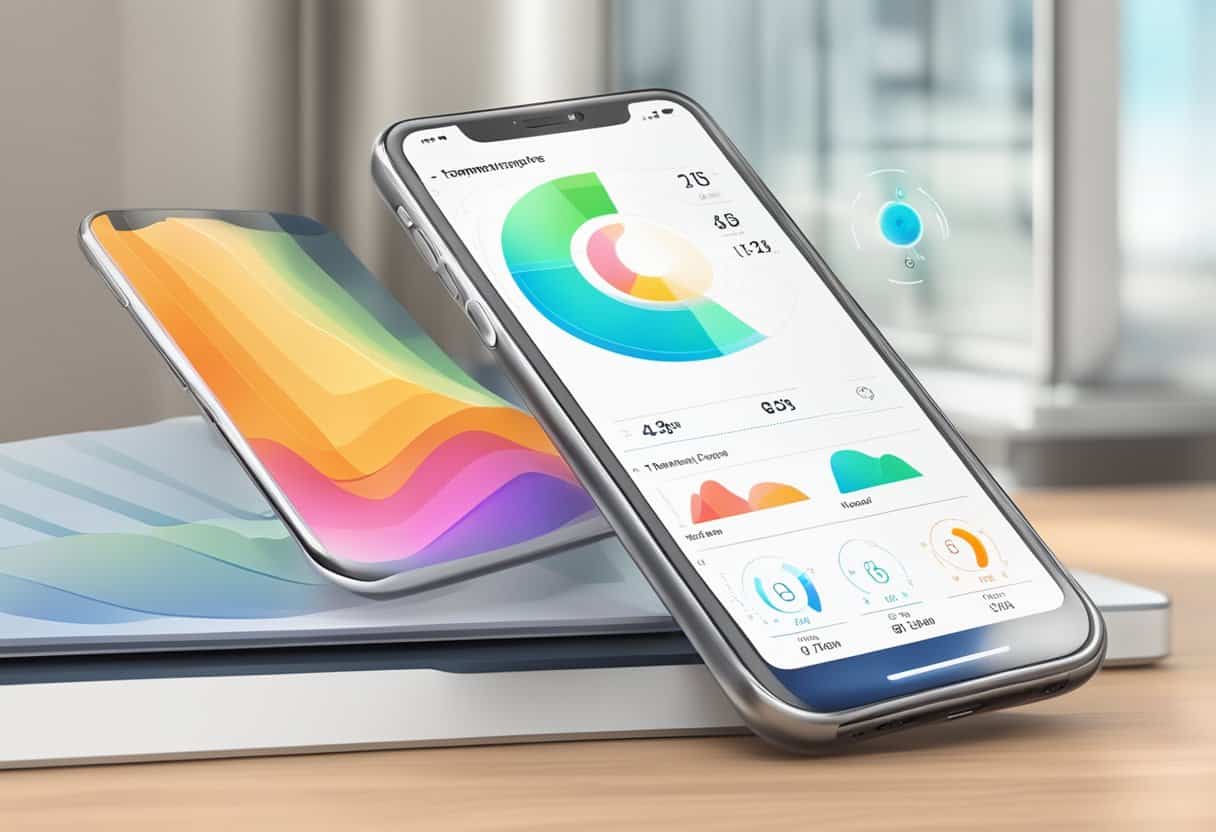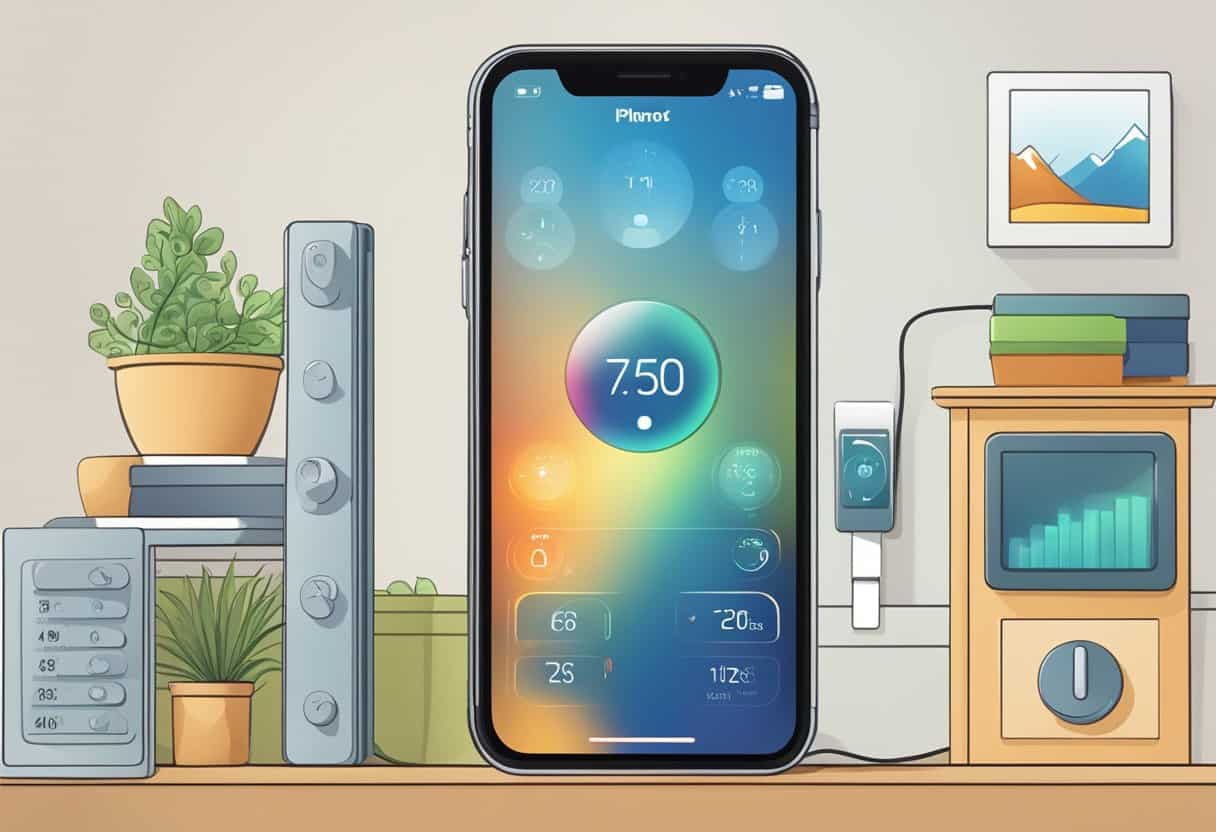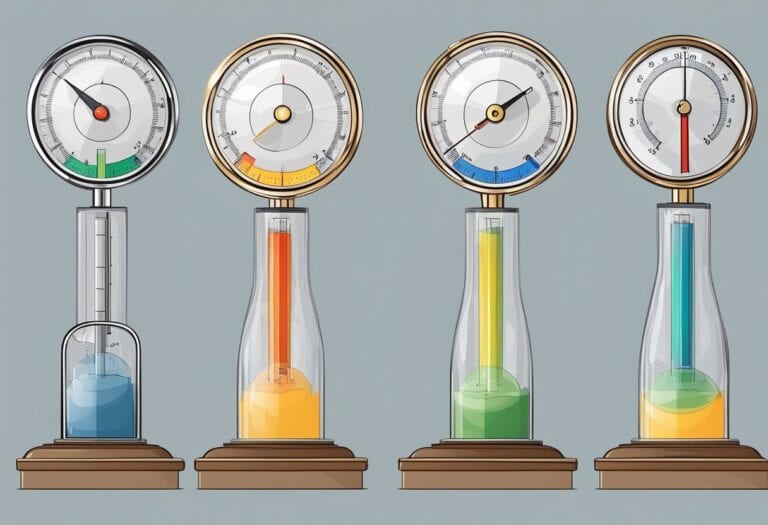In today’s digitally-driven world, your iPhone is more than just a communication device; it’s a versatile tool capable of performing a myriad of functions, including monitoring your environment.
While iPhones do not have a built-in thermometer to measure room temperature directly, there are indirect methods and a variety of apps that can utilize external sensors or data to help you determine the temperature of your surroundings. By understanding how to leverage these apps, you can turn your iPhone into a makeshift room thermometer, perfect for those moments when you need to check if your environment is at a comfortable temperature, be it at home or while traveling.
Leveraging your iPhone for checking room temperature involves a few steps that begin with selecting the right application from the App Store. These apps often work in conjunction with external hardware or use aggregated weather service data to provide an estimate of indoor temperatures.
Additionally, understanding how to accurately read and interpret the data these apps provide is crucial for effective temperature monitoring.
Also, consider other environmental factors that may affect the readings for more precise monitoring.
To check room temperature with an iPhone, use apps that connect to external sensors or aggregate weather service data, as iPhones lack built-in thermometers for this purpose. Choose apps compatible with external hardware for accurate readings and consider smart home integrations for comprehensive monitoring.
Understanding iPhone’s Temperature Measurement Capabilities
To effectively use your iPhone for temperature monitoring, it’s essential to know how its sensors work, their limitations, and methods for accessing temperature-related data.
Built-In Sensors and Components
Your iPhone is equipped with a variety of sensors, but unlike a dedicated thermometer or smart thermometer like SensorPush, it does not have a direct way to measure ambient room temperature. However, it does contain an internal temperature sensor primarily designed to protect the device’s battery and components from overheating. This sensor measures the iPhone’s internal temperature, not the room temperature.
Limitations and Accuracy
The lack of an ambient temperature sensor means that iPhones cannot measure room temperature with a high margin of error. When an iPhone overheats, the internal temperature sensor can trigger safety mechanisms to cool down the device, which can include dimming the screen or shutting down the iPhone entirely. Therefore, for precise temperature measurements, alternative devices such as a smart thermometer are recommended.
Utilizing Health and Fitness Data
Although your iPhone can’t measure room temperature, it does offer a way to track your personal health data relating to environmental exposure through the Apple Health app. The app consolidates health and fitness data from your iPhone, Apple Watch, and third-party apps. While the data captured by your iPhone may imply certain environmental conditions, without a dedicated temperature sensor, it’s important to understand this is not direct temperature monitoring but an inference based on related data.
Selecting the Right Temperature Apps
When looking for an app to check room temperature with your iPhone, it’s essential to evaluate the app’s accuracy, compatibility with external sensors, and integration into smart home systems. Here’s how to identify the best temperature app for your needs.
Evaluating Thermometer Apps
When choosing a thermometer app, you want to ensure that it provides accurate temperature readings. Some apps may display ambient temperature using only the device’s internal sensors, which can be imprecise. For more accurate temperature monitoring, look for apps that are designed to work with external temperature sensors. The SensorPush thermometer is a good example of an external device providing precise data to its companion app.
External Sensor Integration
For precise room temperature data, you’ll want an app that can integrate with external sensors. These sensors use Bluetooth or Wi-Fi to connect with your iPhone. A WiFi thermometer is ideal for remote monitoring. Pairing a real thermometer with a compatible app ensures the temperature readings are accurate. Products like the SensorPush or Govee Home App compatible devices offer straightforward integration with their respective apps, allowing for comprehensive temperature monitoring.
- Bluetooth: Quick and easy pairing for nearby sensors.
- Wi-Fi: Ideal for distant and continuous monitoring.
Smart Home Compatibility
Finally, consider whether the temperature apps can integrate with your smart home ecosystem. A wifi temperature monitor can often connect to other smart devices, enabling you to adjust the heating or cooling system based on real-time temperature data. Third-party apps might need to be compatible with platforms like Apple HomeKit. Seek out smart thermometers that pair with all-encompassing home automation apps, like the Govee Home App, for a seamless smart home experience.
Maximizing iPhone for Room Temperature Monitoring

To efficiently check room temperature using your iPhone, you’ll leverage sensor-powered apps designed for ambient monitoring, as well as optimize your phone’s settings to ensure data precision.
Using Sensor-Powered Monitoring Apps
Your iPhone can be used as a sophisticated tool for monitoring room temperature with the help of ambient temperature sensor-equipped apps. While the iPhone doesn’t have a built-in temperature sensor designed for measuring room temperature, external devices like SensorPush or Temp Stick can be synced to your smartphone using Bluetooth or a Wi-Fi router. These devices have their independent sensors that relay temperature and humidity data back to your iPhone.
- Smart Thermometers: Devices like SensorPush offer high accuracy in measuring temperature and humidity. By placing a smart thermometer in your room, you can receive real-time updates directly on your iPhone.
- Wi-Fi Temperature Monitors: Products such as Temp Stick connect to your home Wi-Fi network, enabling you to monitor temperature remotely, even when you’re not at home.
Adjusting Settings for Optimal Performance
Efficient performance and data accuracy from these apps can be maximized by:
- Bluetooth Connectivity: Ensure your Bluetooth is always on and paired with the external device for constant communication.
- Wi-Fi Stability: Maintain a stable Wi-Fi connection for uninterrupted data transfer, mainly if you use devices like Wi-Fi temperature monitors.
- Background App Refresh: Activate this feature for your temperature monitoring app to ensure it receives the latest data from the external sensor even when you’re not actively using the app.
- Algorithm Updates: Regularly update the app to the latest version to benefit from any refinements in the algorithm that enhances data accuracy.
By integrating an external ambient temperature sensor with your iPhone and adjusting these settings, you maintain flexibility in monitoring room temperature effectively. It’s essential to choose a reliable app that offers detailed insights and adaptable settings to suit your requirements for precision and ease of use.
Frequently Asked Questions
In this section, you’ll find concise answers to common queries about checking room temperature using your iPhone, covering available apps and methods to estimate the temperature in your surroundings accurately.
What apps are available to measure indoor temperature using an iPhone?
Several apps in the App Store allow you to measure indoor temperature. While your iPhone doesn’t have a built-in thermometer for ambient temperature, apps can estimate the temperature based on various data sources.
Can I use my iPhone to monitor the temperature of my surroundings?
Yes, you can use your iPhone to monitor the temperature, typically with the help of external devices that work with apps to provide temperature readings.
Are there any accurate room temperature apps for iPhone that are free?
There are free apps for iPhone that offer room temperature measurements, but for precision, they often require external hardware or use data from local weather stations.
How can I find out my room temperature online using my smartphone?
You can find out the temperature of your room online by using web services that report local weather conditions, which can be accessed through your smartphone’s internet browser.
Is it possible to check the temperature of a room with my iPhone if it doesn’t have a built-in thermometer?
Yes, it is possible when using additional hardware that connects to your iPhone, as the device itself lacks a built-in thermometer for measuring room temperature.
What is the recommended way to determine indoor temperature with a mobile device?
The recommended way is to use a smart home temperature sensor that pairs with a mobile app on your iPhone, providing you with accurate and real-time indoor temperature data.







